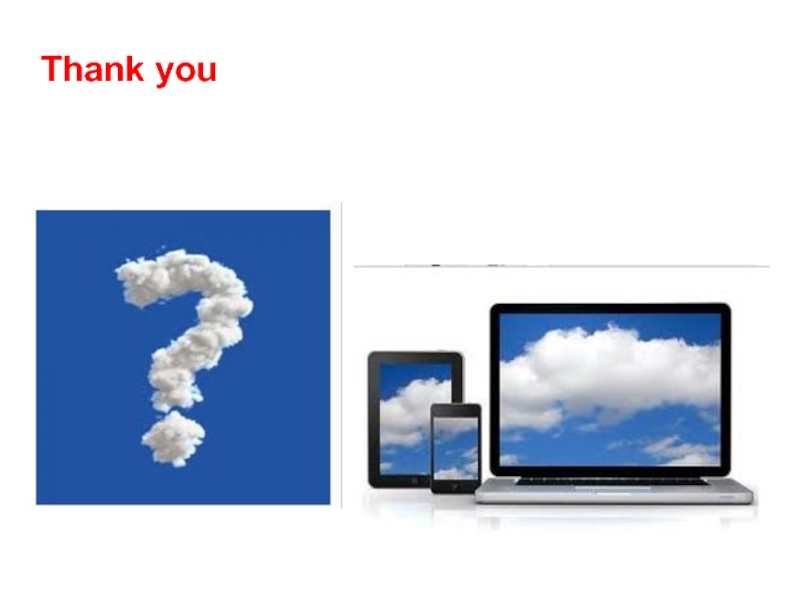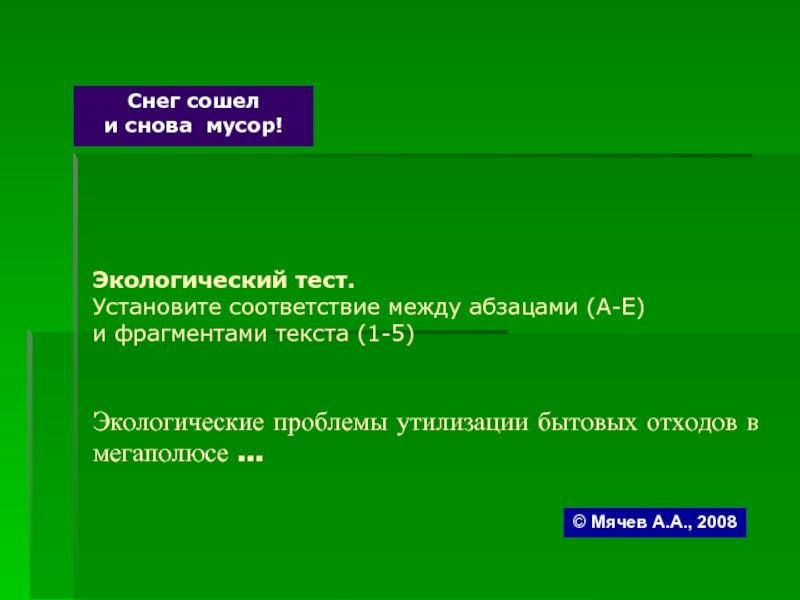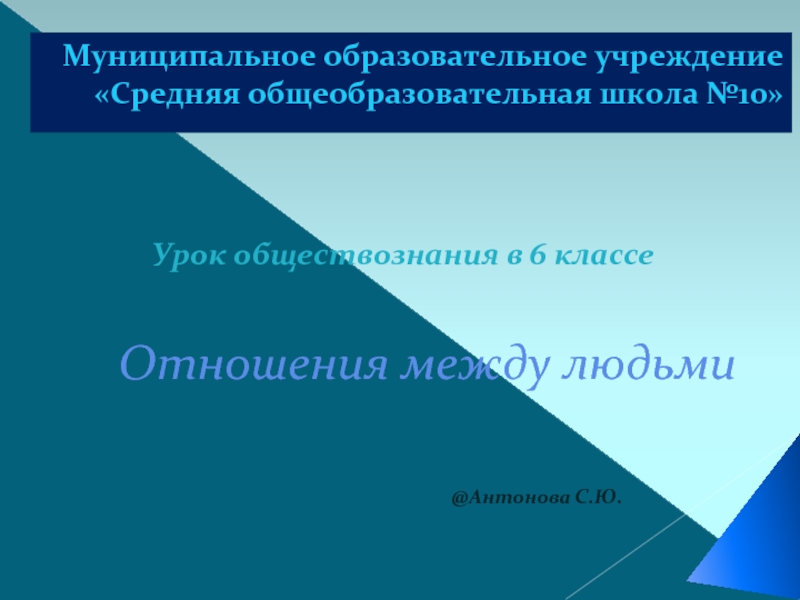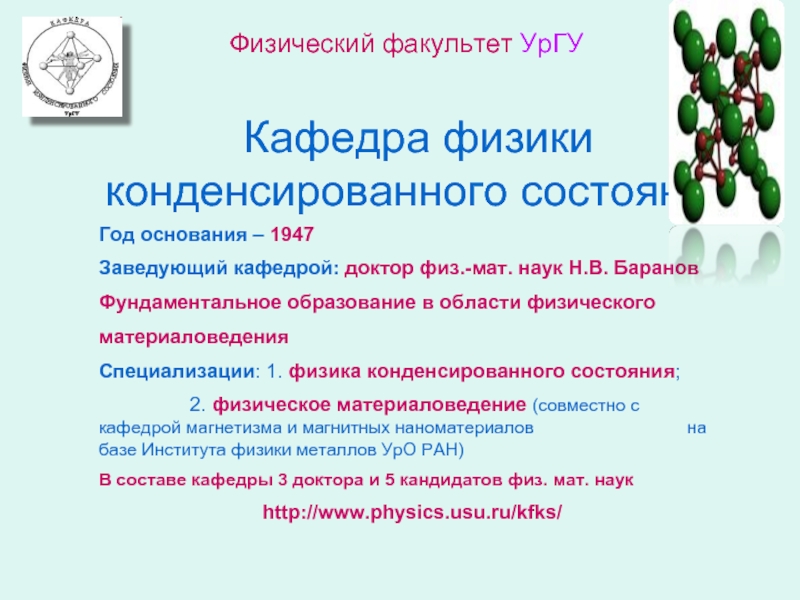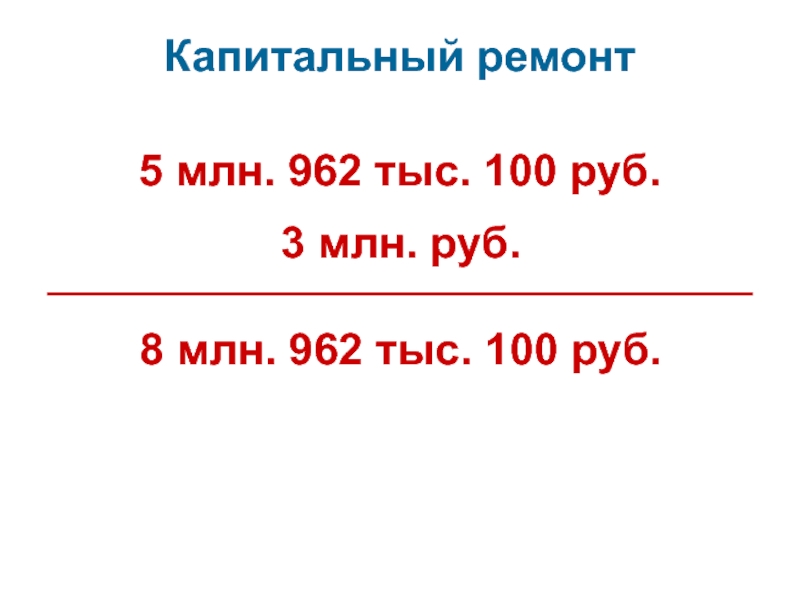- Главная
- Разное
- Дизайн
- Бизнес и предпринимательство
- Аналитика
- Образование
- Развлечения
- Красота и здоровье
- Финансы
- Государство
- Путешествия
- Спорт
- Недвижимость
- Армия
- Графика
- Культурология
- Еда и кулинария
- Лингвистика
- Английский язык
- Астрономия
- Алгебра
- Биология
- География
- Детские презентации
- Информатика
- История
- Литература
- Маркетинг
- Математика
- Медицина
- Менеджмент
- Музыка
- МХК
- Немецкий язык
- ОБЖ
- Обществознание
- Окружающий мир
- Педагогика
- Русский язык
- Технология
- Физика
- Философия
- Химия
- Шаблоны, картинки для презентаций
- Экология
- Экономика
- Юриспруденция
Introduction of Mobile. Cloud Computing презентация
Содержание
- 1. Introduction of Mobile. Cloud Computing
- 2. What is a mobile cloud computing?
- 3. Motivation Mobile devices (e.g., smartphone, tablet pcs,
- 4. Definitions Mobile Network Cloud Computing
- 5. Definitions utility
- 6. Definitions utility Utility computing is the
- 7. Definitions utility A computer cluster is
- 8. Definitions utility Grid computing is the
- 9. Definitions utility Cloud computing is a
- 10. WHAT IS CLOUD COMPUTING? NIST Definition
- 11. IaaS: Infrastructure as a Service PaaS: Platform
- 13. SaaS PaaS IaaS Amazon Google Microsoft Salesforce
- 14. 4 Cloud Deployment Models Private cloud
- 15. Cost efficiencies Time efficiencies Power efficiencies Improved
- 16. Where is the MCC? Mobile Cloud
- 17. Market Trend
- 18. Different Perspective for Architecture of MCC Agent-client scheme Collaborated scheme
- 19. Architectures of MCC
- 20. Protocol Model The concept model of
- 21. Resource Scheduling Resource scheduling components address the
- 22. Context Management Context Enabled features
- 23. Two major approaches Application partition and offloading
- 24. Advantageous of MCC Improving reliability
- 25. How MCC Can Extend Battery Lifetime? Challenges:
- 26. How MCC Can Improve Storage Capacity? Challenges
- 27. How MCC Can Improve Reliability? Challenges Users
- 28. Other advantageous of MCC Dynamic provisioning,
- 29. Applications of MCC Mobile commerce, Mobile healthcare, Mobile learning, Mobile Gaming.
- 30. Mobile Commerce Mobile commerce (m-commerce) is
- 31. Mobile Commerce Some categories of M-commerce: Finance, Advertising, Shopping.
- 32. Mobile Learning (M-LEARNING) = (E-LEARNING) + Mobility
- 33. Mobile-healthcare Comprehensive health
- 34. Mobile Gaming Mobile game (m-game) is a
- 35. Other applications on MCC Keyword based
- 36. ISSUES AND APPROACHES OF MCC Due to
- 37. Issues in Mobile Communication Side Availability
- 38. Low Bandwidth Solutions Availability
- 39. Availability Solutions Finding stable neighbour WiFi
- 40. Heterogeneity Solutions Context management architecture based
- 41. Issues in Computing Side Availability
- 42. Issue and Solutions in Computing Offload Offloading
- 43. Issue and Solutions in Computing Offload For
- 44. Issues in Computing Side Security Security
- 45. Issues in Computing Side Security Security
- 46. Issues in Computing Side Security of data
- 47. Open Issues
- 48. How to combine the two technology
- 49. Low bandwidth Mobility of users Increasing
- 50. Low bandwidth: 4G Solutions Increases bandwidth
- 51. Low bandwidth: Femto Cells Solutions Provides very
- 52. Low Bandwidth: Cognitive Radios Solutions Cognitive
- 53. Handover (HO) in MCC Due to mobility
- 54. Pricing Mechanism Using services in MCC involves
- 55. Service Convergence The development and competition of
- 56. References [1] Hoang T. Dinh, etal,
- 57. Thank you
Слайд 3Motivation
Mobile devices (e.g., smartphone, tablet pcs, etc) are increasingly becoming an
Dream of “Information at your fingertips anywhere anytime”,
Mobile devices still lack in resources compared to a conventional information processing device such as PCs and laptops
Motivation
Soultion
Mobile Cloud Computing (MCC)
Слайд 6Definitions
utility
Utility computing is the packaging of computing resources, such as computation
Слайд 7Definitions
utility
A computer cluster is a group of linked computers, working together
Слайд 8Definitions
utility
Grid computing is the application of several computers to a single
Слайд 9Definitions
utility
Cloud computing is a style of computing in which dynamically scalable
Слайд 10WHAT IS CLOUD COMPUTING?
NIST Definition
“A model for enabling convenient, on-demand network
Cloud computing is a style of computing in which dynamically scalable and often virtualized resources are provided as a serve over the Internet.
Слайд 11IaaS: Infrastructure as a Service
PaaS: Platform as a Service
SaaS : Software
Major Types of cloud service
Слайд 13SaaS
PaaS
IaaS
Amazon
Google
Microsoft
Salesforce
Service Delivery Model Examples
Products and companies shown for illustrative purposes only
Слайд 144 Cloud Deployment Models
Private cloud
-Enterprise owned or leased
Community cloud
-Shared infrastructure
Public cloud
-Sold to the public, mega-scale infrastructure
Hybrid cloud
-composition of two or more clouds
Слайд 15Cost efficiencies
Time efficiencies
Power efficiencies
Improved process control
Improved security
“Unlimited” capacity
Cloud Efficiencies and Improvements
Burst
Short-duration projects
Cancelled or failed missions
$
Network connectivity
Standardized, updated base images
Centrally auditable log servers
Centralized authentication systems
Improved forensics (w/ drive image)
Слайд 16Where is the MCC?
Mobile Cloud Computing (MCC) at its simplest,
Definition
Слайд 20Protocol Model
The concept model of cloud computing cannot be directly
While MCC focuses on
the connection between client and cloud, which may differ from common features of cloud computing.
Client
Cloud
Transmission Channel
Resource Scheduling
Context Management
Слайд 21Resource Scheduling
Resource scheduling components address the schedule of resource, such as
Assign the appropriate pricing mechanism to maximize the revenue of mobile cloud computing systems and provide incentives for mobile users,
Considering different cases, e.g., resource may be stable but applications may transmit to other places.
Слайд 22Context Management
Context Enabled features of mobile device allow us
Two major classes of contexts:
Social Context,
Spatial context
Слайд 23Two major approaches
Application partition and offloading technology play an important role
Application partition decompose complex workload to atomic ones, thus can be processed concurrently.
Offloading application can free burden of mobile devices.
Слайд 25How MCC Can Extend Battery Lifetime?
Challenges:
Battery is one of the main
Traditional approaches need to changes the structure of mobile devices.
The additional cost for the end mobile users is not appealing in wireless networks.
MCC’s solution:
Computation offloading technique:
Immigrate the large computations and complex processing from resource-limited devices (i.e., mobile devices) to resourceful machines (i.e., servers in clouds).
This avoids taking a long application execution time on mobile devices which results in large amount of power consumption.
Слайд 26How MCC Can Improve Storage Capacity?
Challenges
Users need more and more capacity
Need to change the device,
More capacity, more weight
MCC’s solution
MCC is developed to enable mobile users to store/access the large data on the cloud through wireless networks,
Examples of existing services:
Amazon Simple Storage Service (Amazon S3),
Image Exchange,
Flickr, ShoZu.
Слайд 27How MCC Can Improve Reliability?
Challenges
Users need reliable backup for their information,
Lack of data security model for both service providers and users in existing mobile users,
MCC’s solution
Storing data or running applications on clouds is an effective way to improve the reliability since the data and application are stored and backed up on a number of computers.
Слайд 28Other advantageous of MCC
Dynamic provisioning,
Scalability,
Multi-tenancy,
Ease of integration.
Слайд 30Mobile Commerce
Mobile commerce (m-commerce) is a business model for commerce
Слайд 32Mobile Learning (M-LEARNING) = (E-LEARNING) + Mobility
Traditional m-learning applications have limitations
1- High cost of devices and network,
2- Low network transmission rate,
3- Limited educational resources
Cloud-based m-learning applications are introduced to solve these limitations.
For example, utilizing a cloud with the large storage capacity and powerful processing ability, the applications provide learners with much richer services in terms of data (information) size, faster processing speed, and longer battery life.
Слайд 33
Mobile-healthcare
Comprehensive health monitoring services,
Intelligent emergency management system
Health-aware mobile devices detect pulse-rate,
Pervasive
Pervasive lifestyle incentive.
Слайд 34Mobile Gaming
Mobile game (m-game) is a potential market generating revenues for
M-game can completely offload game engine requiring large computing resource (e.g., graphic rendering) to the server in the cloud, and gamers only interact with the screen interface on their devices.
Слайд 36ISSUES AND APPROACHES OF MCC
Due to the integration of two different
MCC has to face many technical challenges.
Слайд 37Issues in Mobile Communication Side
Availability
Heterogeneity
Network latency and limited bandwidth
Слайд 38Low Bandwidth Solutions
Availability
Data distribution policy which determines when and
E. Jung, etal “User-profile-driven collaborative bandwidth sharing on mobile phones” in MCS, no. 2, 2010.
Share the limited bandwidth among mobile users who are located in the same area (e.g., a workplace, a station, and a stadium) and involved in the same content (e.g., a video file).
X. Jin, etal, “Cloud Assisted P2P Media Streaming for Bandwidth Constrained Mobile Subscribers,” (ICPADS), pp. 800, January 2011.
Слайд 39Availability Solutions
Finding stable neighbour
WiFi multi-hop networking system
G. Huerta “A virtual
L. Zhang,, “WiFace: a secure geosocial networking system using WiFi-based multi-hop MANET,” in MSC, 2010.
Слайд 40Heterogeneity Solutions
Context management architecture based on Intelligent Radio Network Access
A. Klein, et.al, “Access Schemes for Mobile Cloud Computing,” in MDM, June 2010.
Слайд 41Issues in Computing Side
Availability
Context aware mobile cloud services
Computing offload
Security
Enhancing
Слайд 42Issue and Solutions in Computing Offload
Offloading in the statistic environment is
For small calculation and depending on the transmission technology;
Tradeoff between communication and computation cost.
G. Chen, et.al, “Studying energy trade offs in offloading computation/compilation in Java-enabled mobile devices,” IEEE Transactions on Parallel and Distributed Systems, …2004.
Слайд 43Issue and Solutions in Computing Offload
For the dynamic environment, offloading encounter
Changing connection statues and bandwidth,
Data may reach not to the end users.
Слайд 44Issues in Computing Side
Security
Security for mobile users,
Security for mobile applications,
Privacy
Security
Integrity
Authentication,
Слайд 45Issues in Computing Side
Security
Security for mobile users,
Security for mobile applications,
Privacy
Solutions
Installing
on the cloud.
Слайд 46Issues in Computing Side
Security of data on cloud
Integrity
Authentication,
Enhancing the efficiency
Context aware mobile cloud services,
Слайд 48
How to combine the two technology seamlessly?
The main aim of
How can the services from PC’s platforms be transplanted to mobile devices?
Слайд 49Low bandwidth
Mobility of users
Increasing the demand of mobile users,
More
Solutions
4G networks (based on LTE)
Femto cells
Cognitive radios
Слайд 50Low bandwidth: 4G Solutions
Increases bandwidth for subscribers up to 100
Wider mobile coverage area,
Quicker and reliable handoff,
Varied services,
Quality of service guarantee in LTE and Wi-Fi;
Coexistence with other networks (HSPA+, GSM, WiMax)
Слайд 51Low bandwidth: Femto Cells Solutions
Provides very good coverage for small area
Heterogonous Standards for access layer and Mac layer
Discontinuity in coverage
Слайд 52Low Bandwidth: Cognitive Radios Solutions
Cognitive radio can be expected as
Cost
Complexity
Heterogeneity
No- Interface
None standard protocols
Слайд 53Handover (HO) in MCC
Due to mobility of users, MCC encounters HO
Internetworking HO
Intranetworking HO
Latency
Disconnection
No protocol for HO between networks in MCC
Слайд 54Pricing Mechanism
Using services in MCC involves with
Mobile service provider (MSP)
Cloud
MSPs and CSPs have different services management, customers management, methods of payment and prices.
Слайд 55Service Convergence
The development and competition of cloud service providers can lead
A single cloud is not enough to meet mobile user’s demands.
The new scheme is needed in which the mobile users can utilize multiple cloud in a unified fashion
The mobile sky computing, will enable providers to support a cross-cloud communication and enable users to implement mobile services and applications.
Слайд 56References
[1] Hoang T. Dinh, etal, “A survey of Mobile Cloud
[2] M. Satyanarayanan, “Mobile computing: the next decade,” in MCS, June 2010.
[3] Le Guan, etal. “A survey of research on mobile cloud computing”, IEEE/ACIS, 2010.
[4] H. Qui, etal. “Research on mobile cloud computing: review, trend and perspective”, IEEE 2012.
[5] M. H. Tang, et.al “A dynamic mechanism for handling mobile computing environmental changes,” in InfoScale, no. 7, pp. 1-9, May 2006.
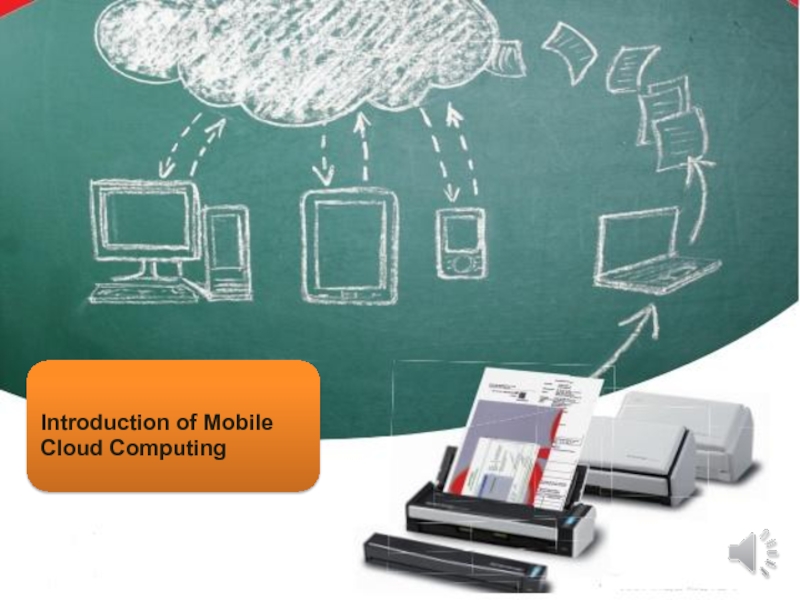
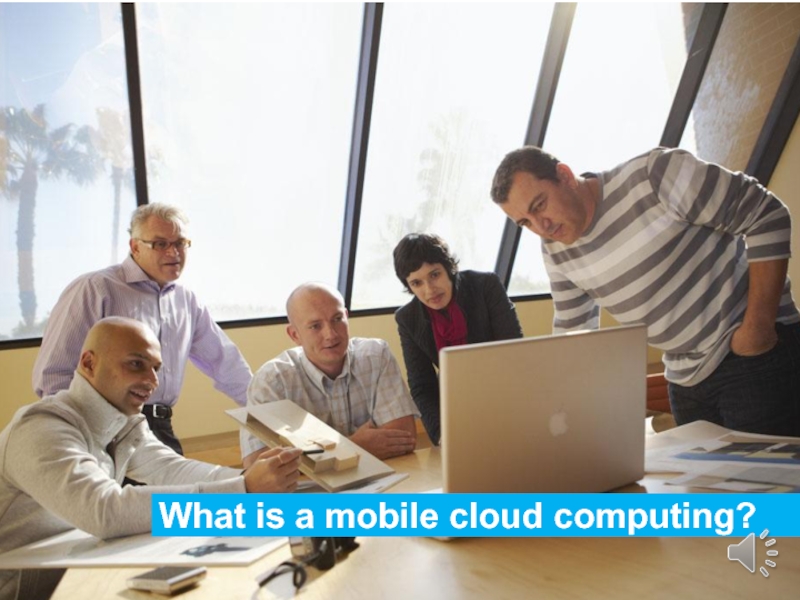
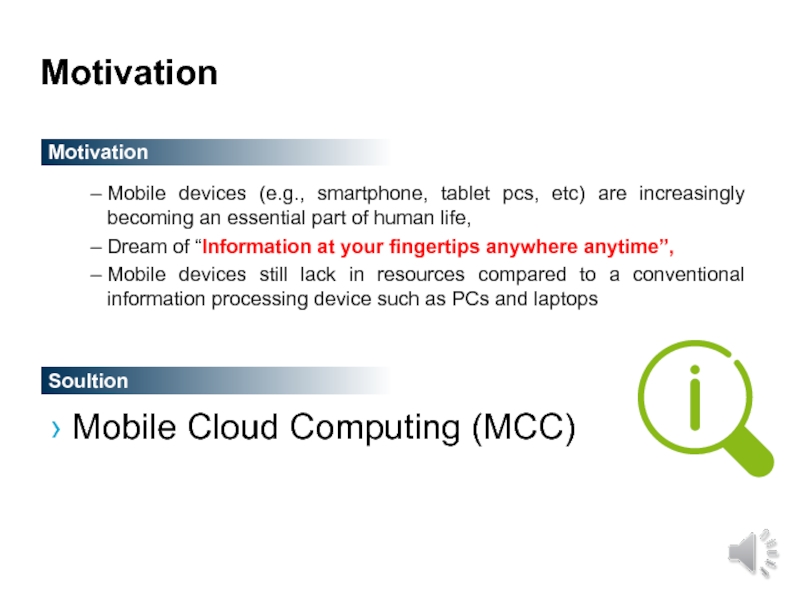
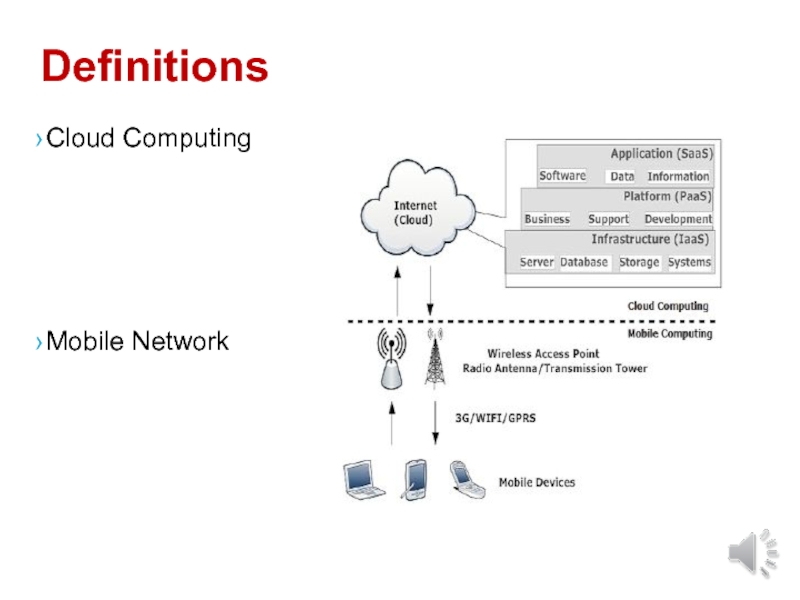
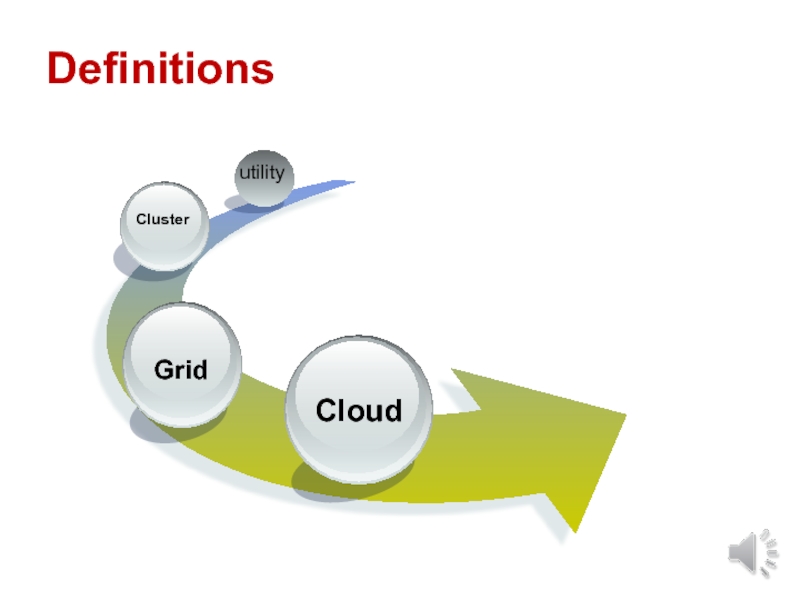

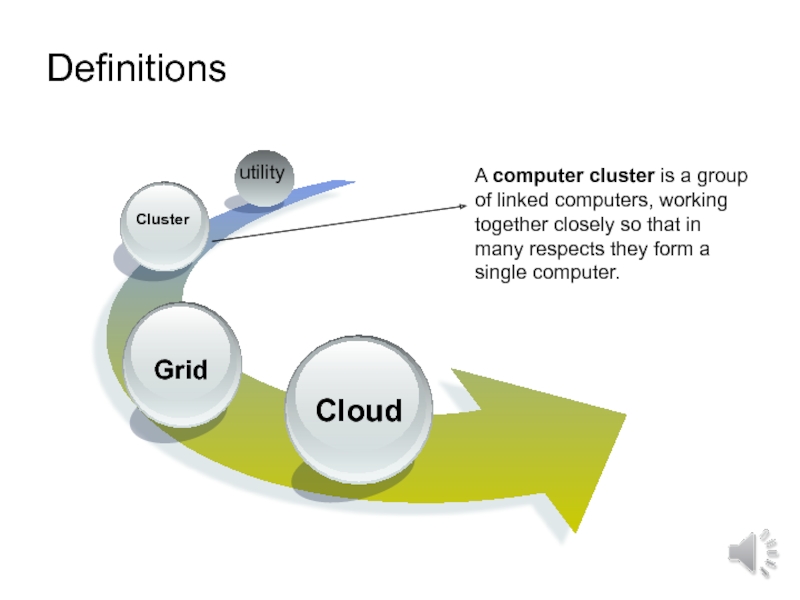
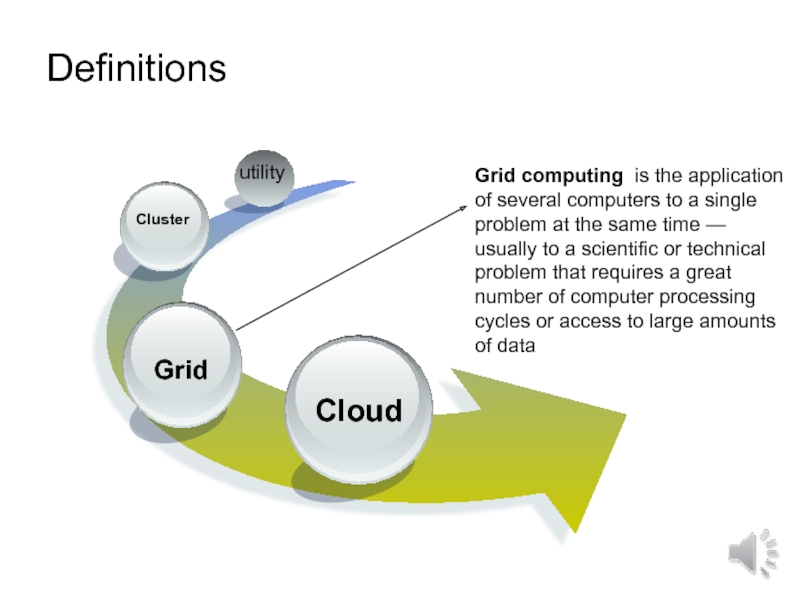
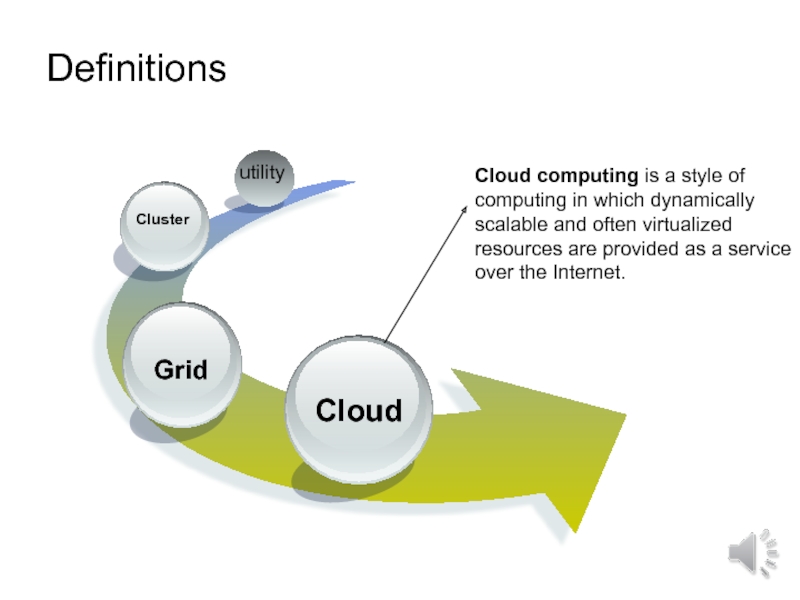

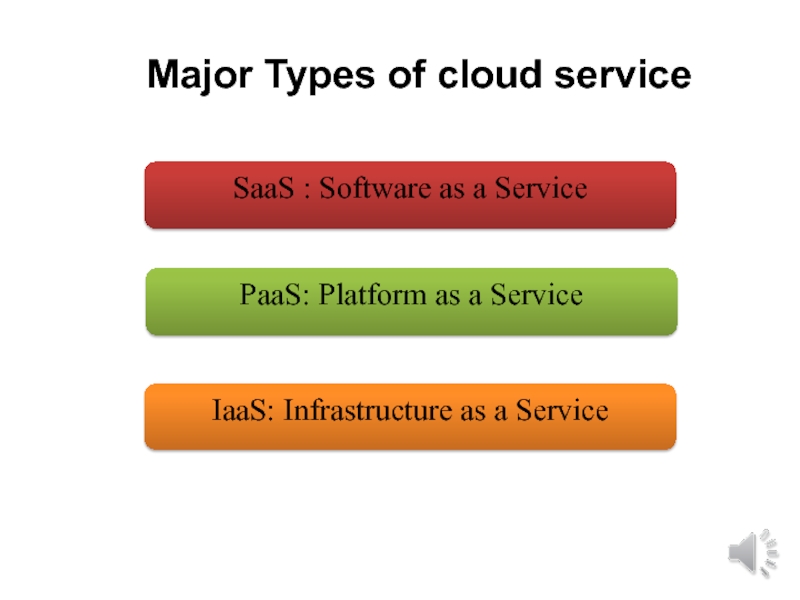

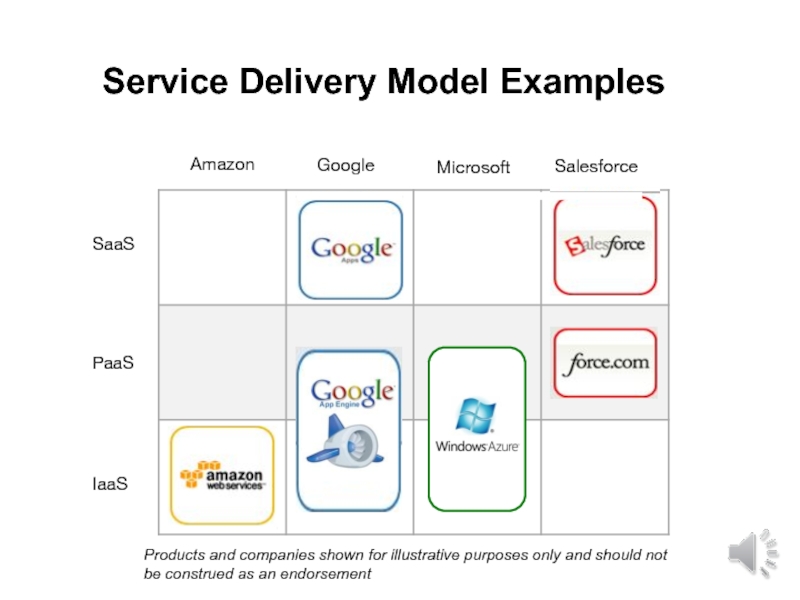
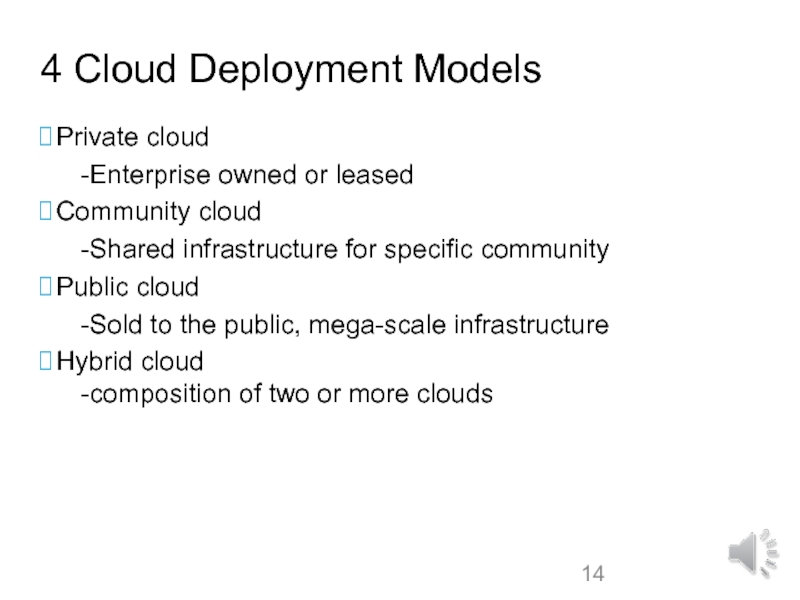
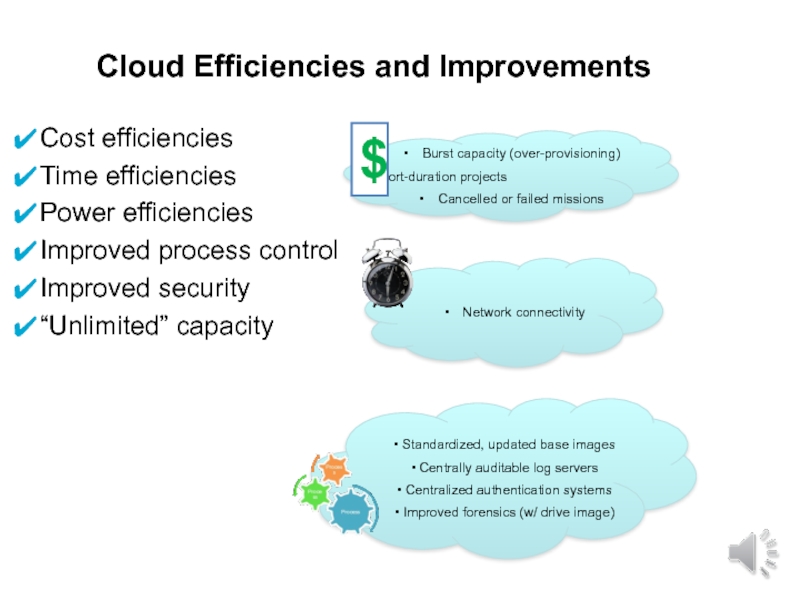
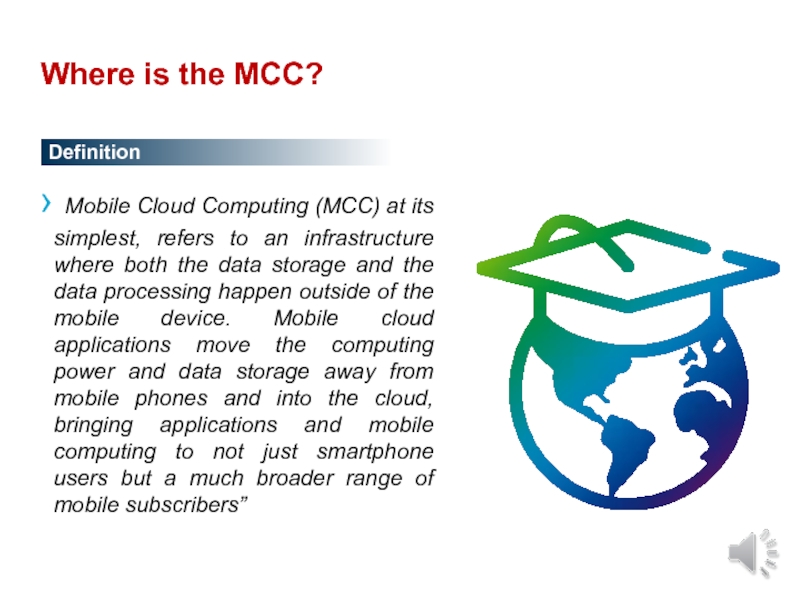
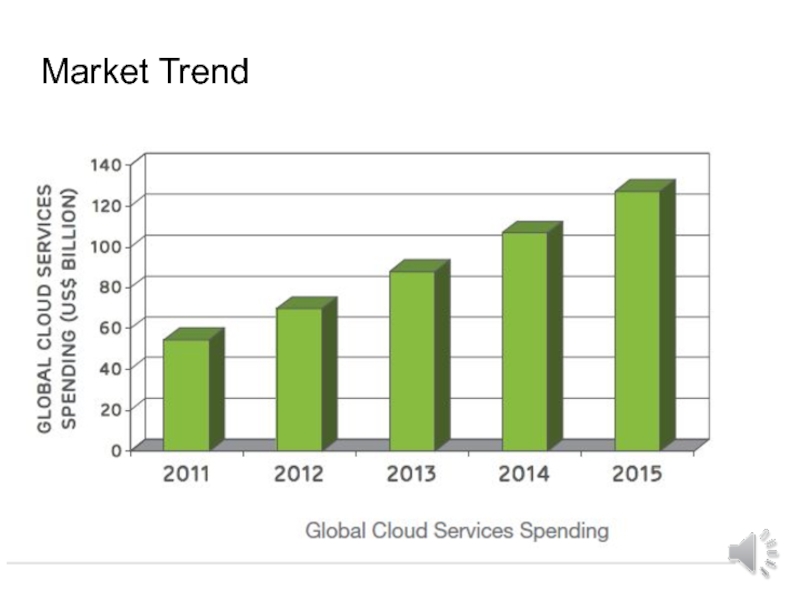




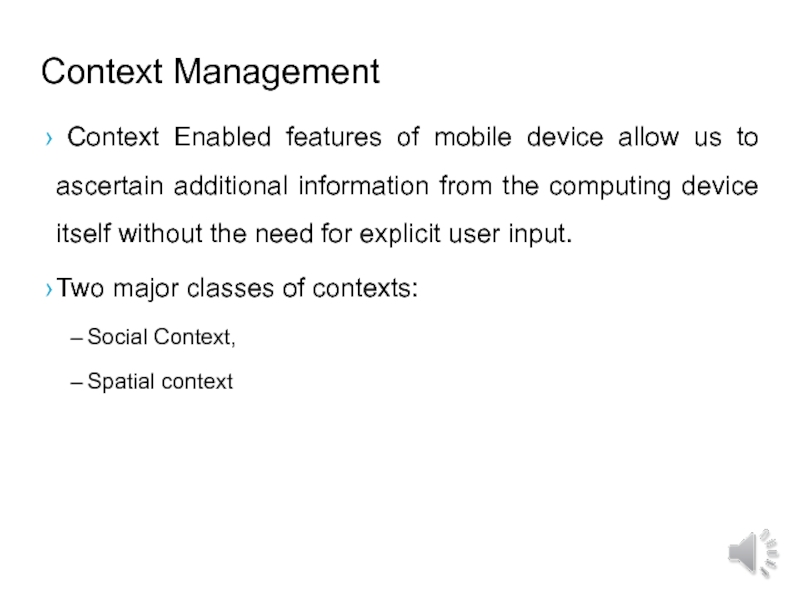
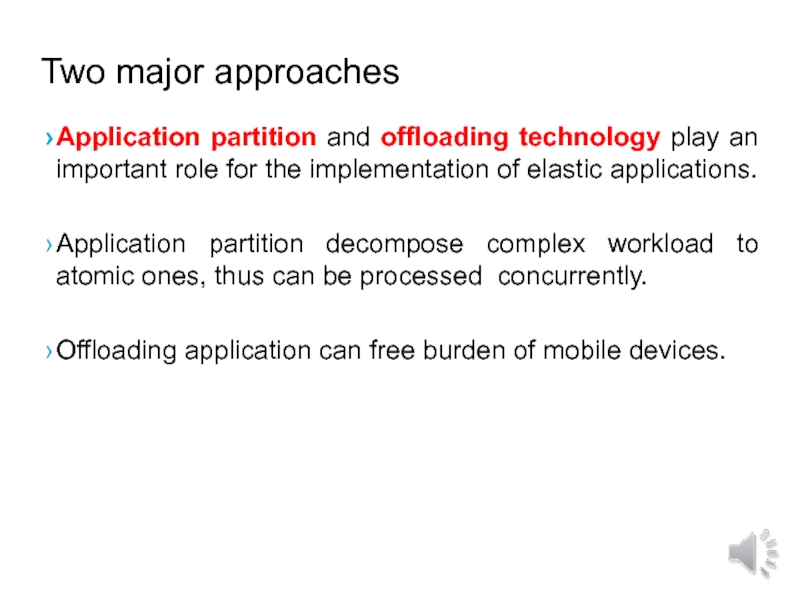


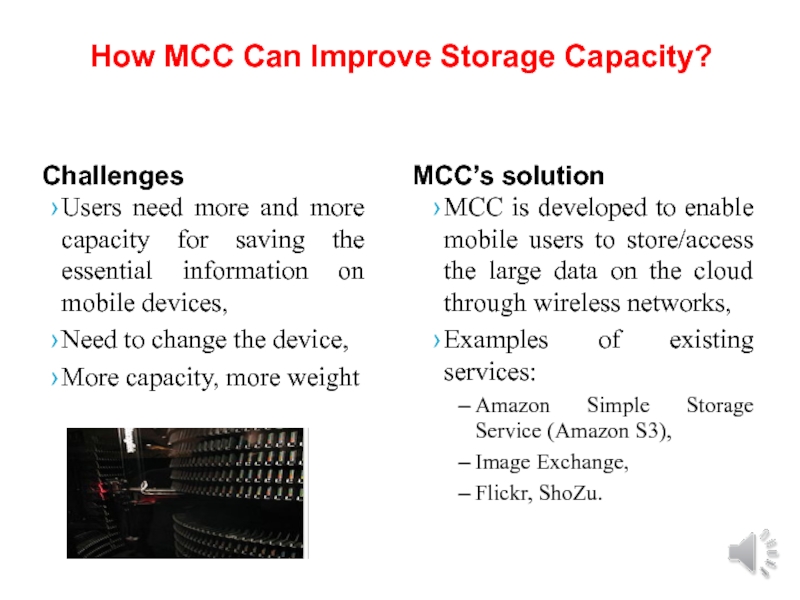
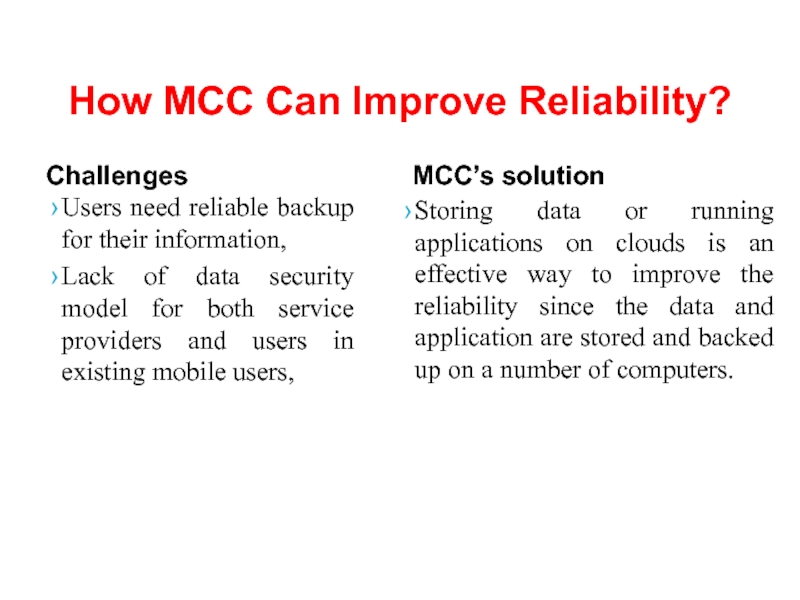
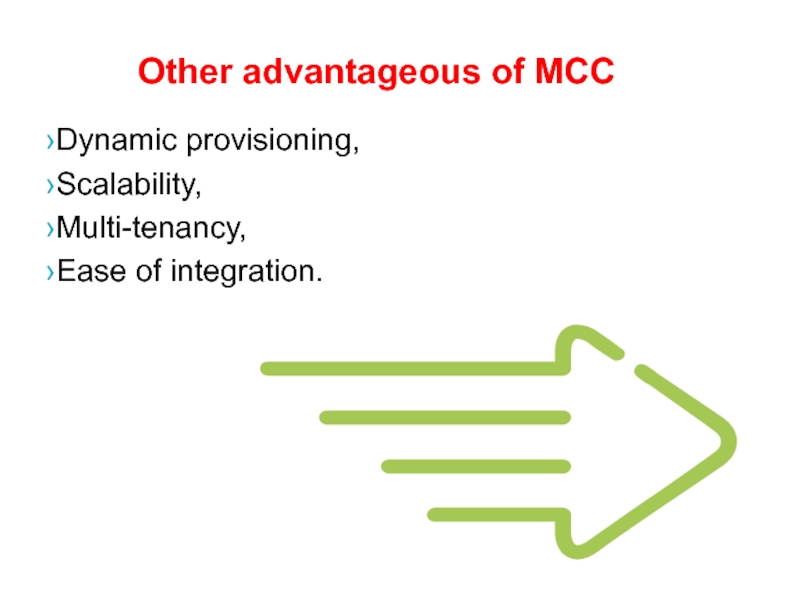





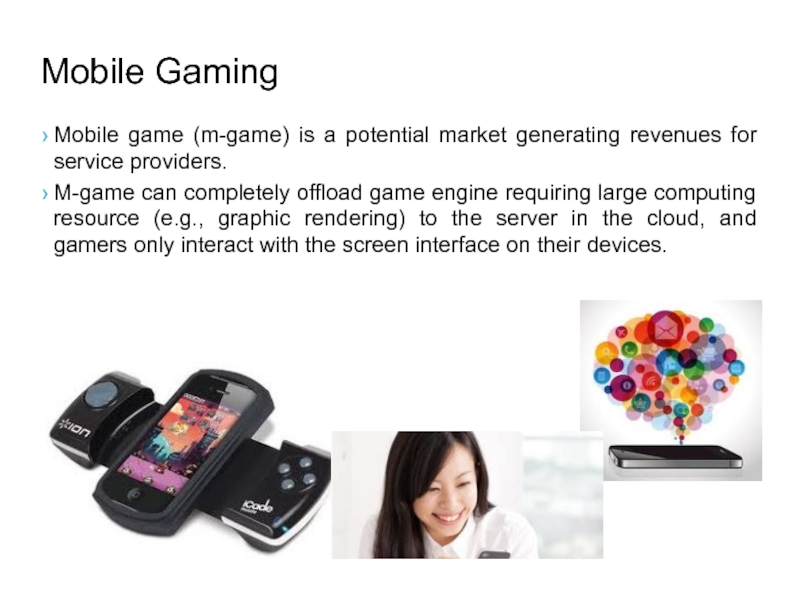
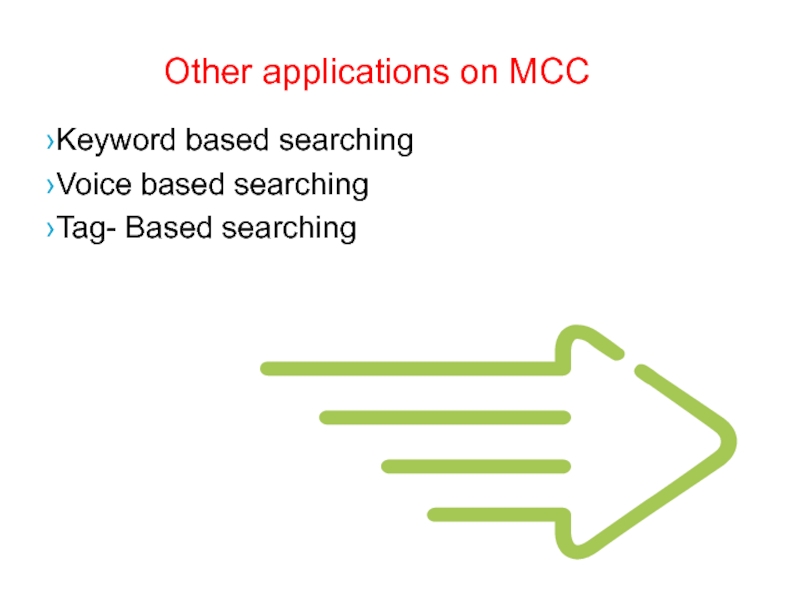
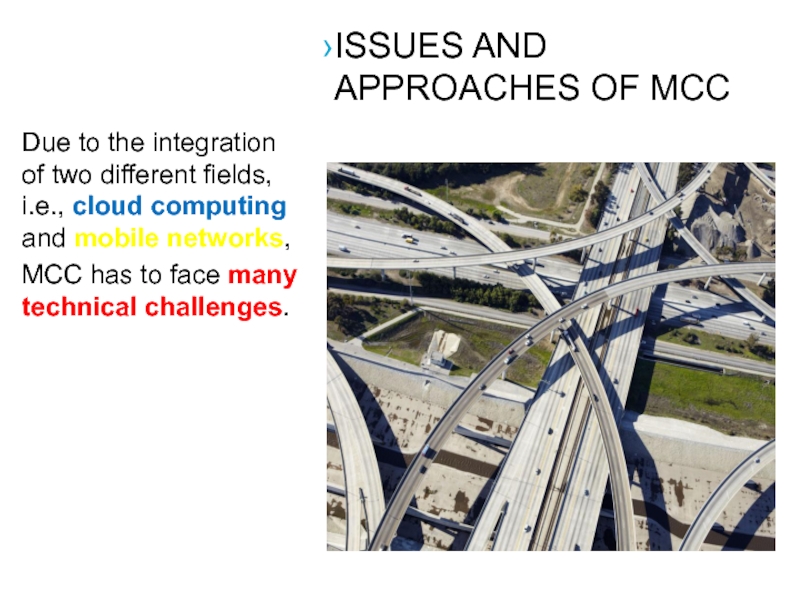
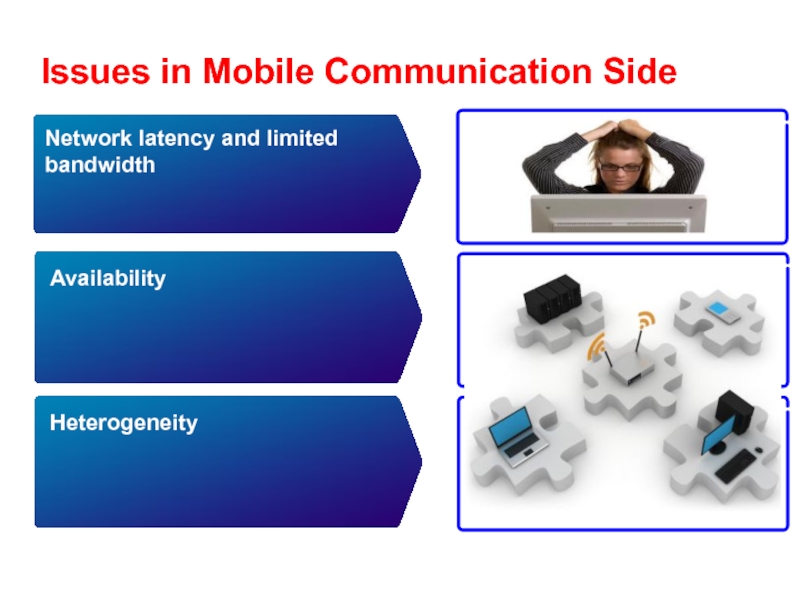

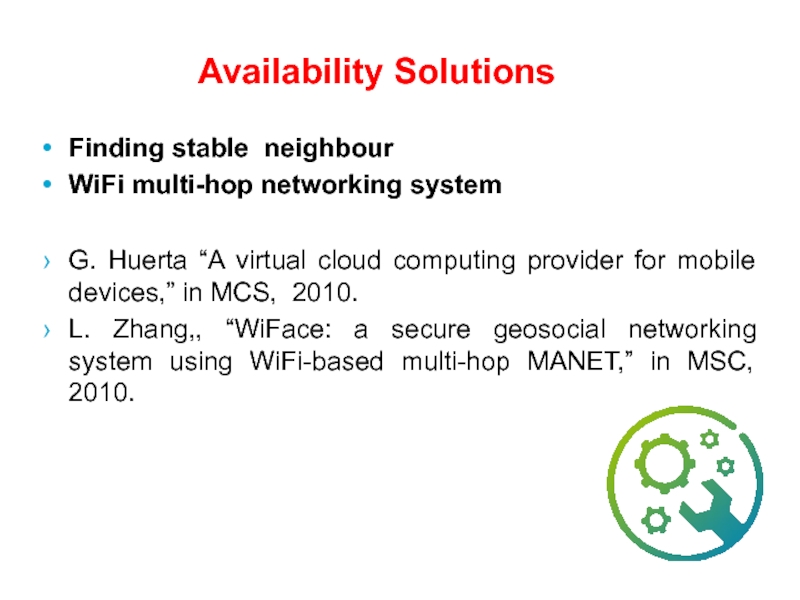
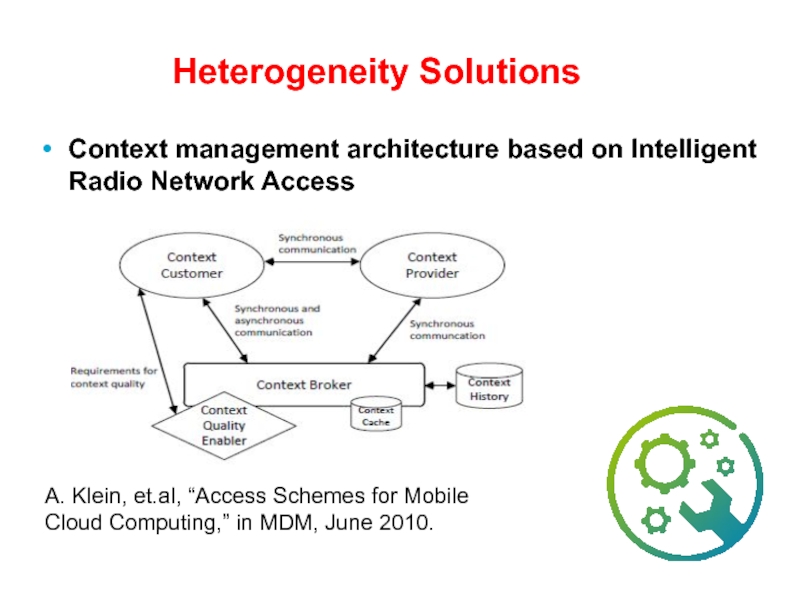
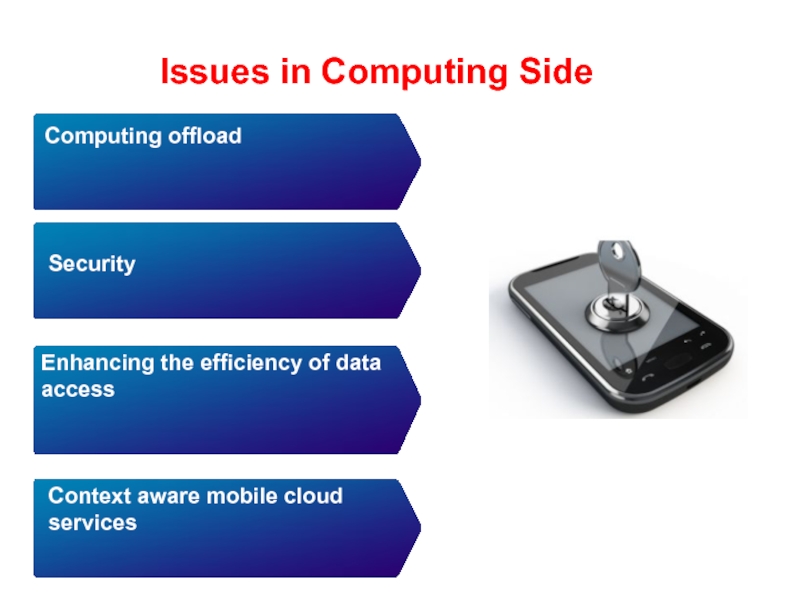
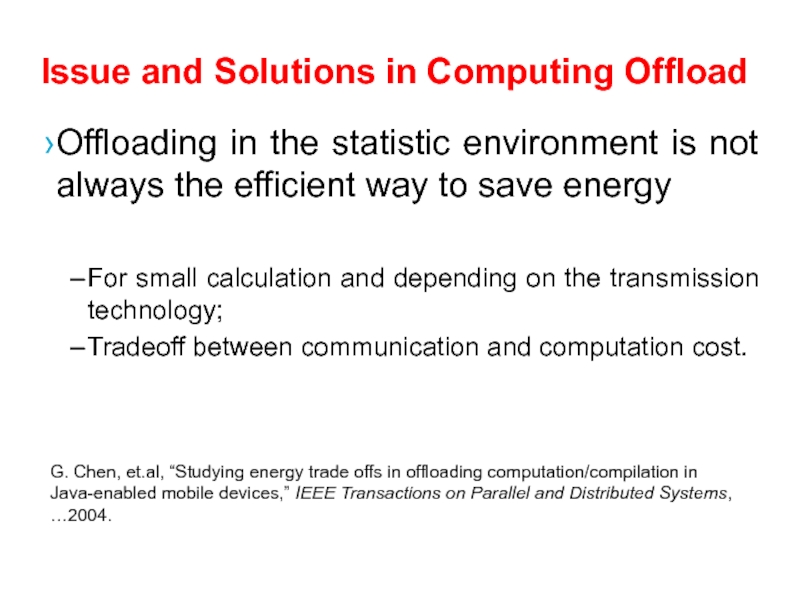
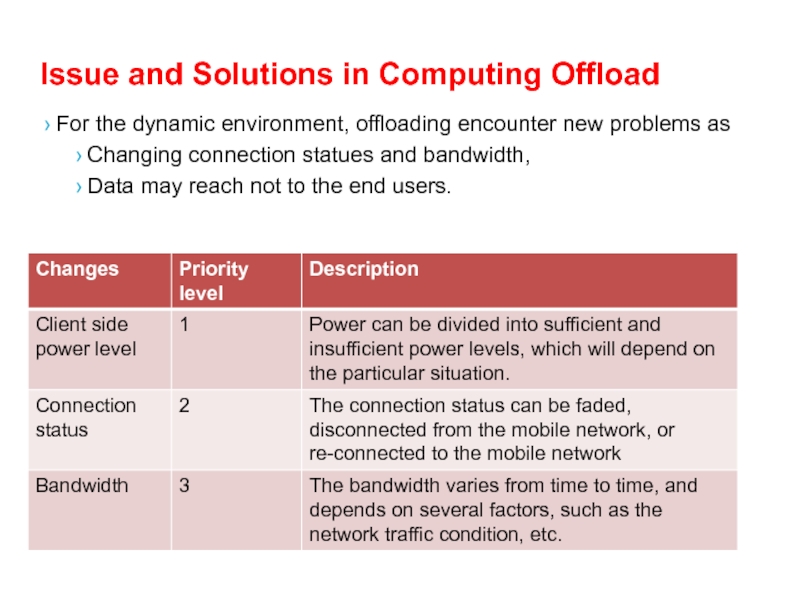
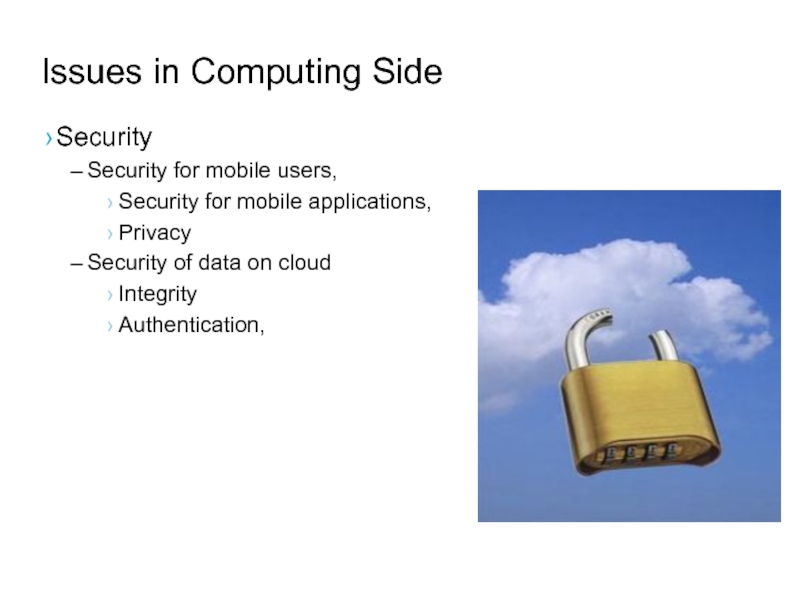
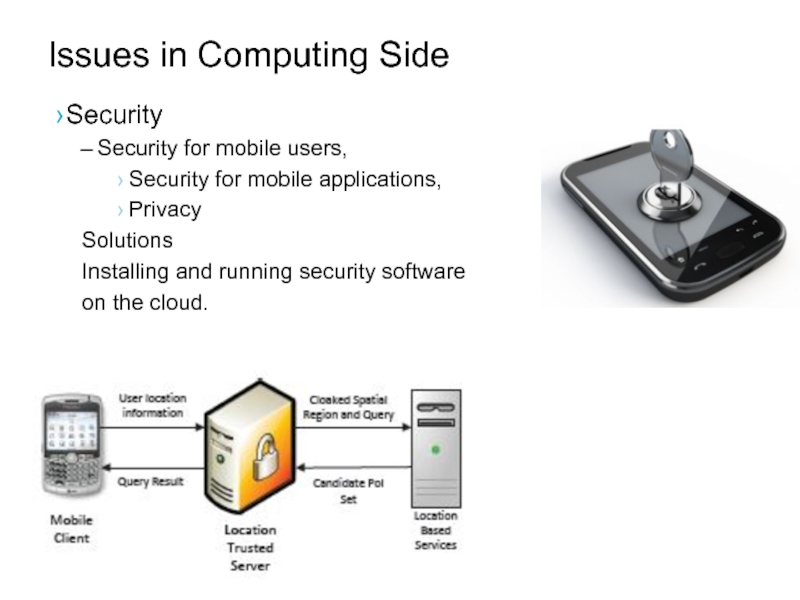
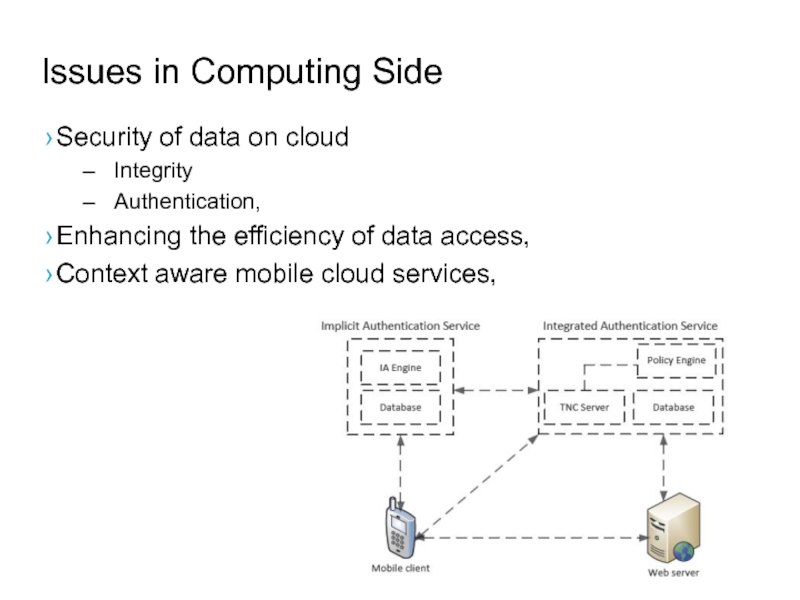
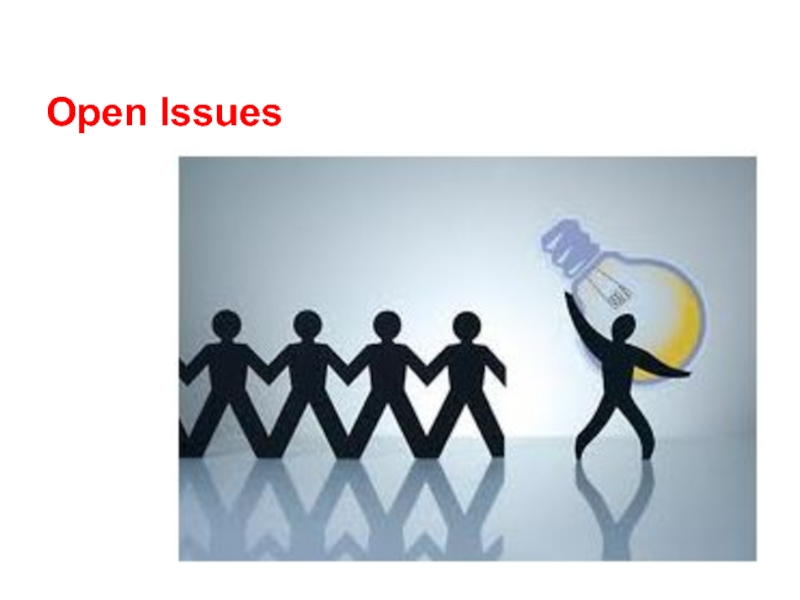
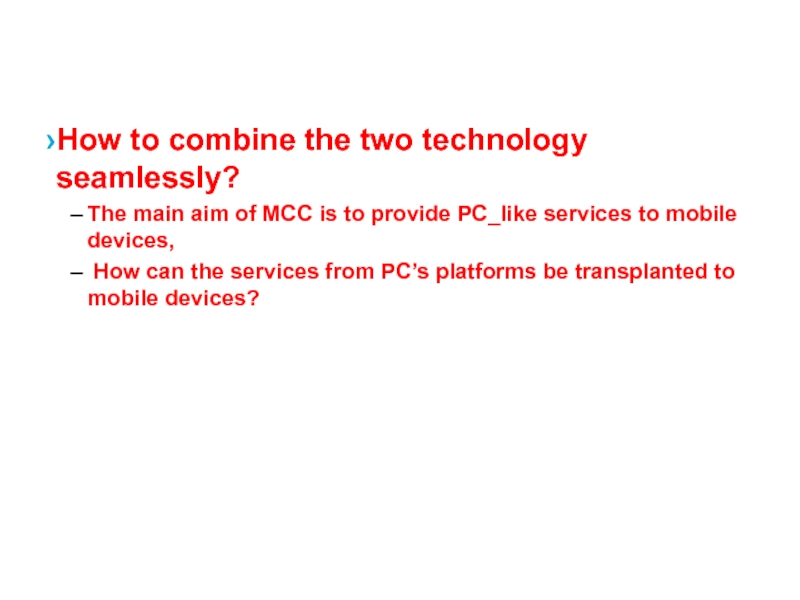
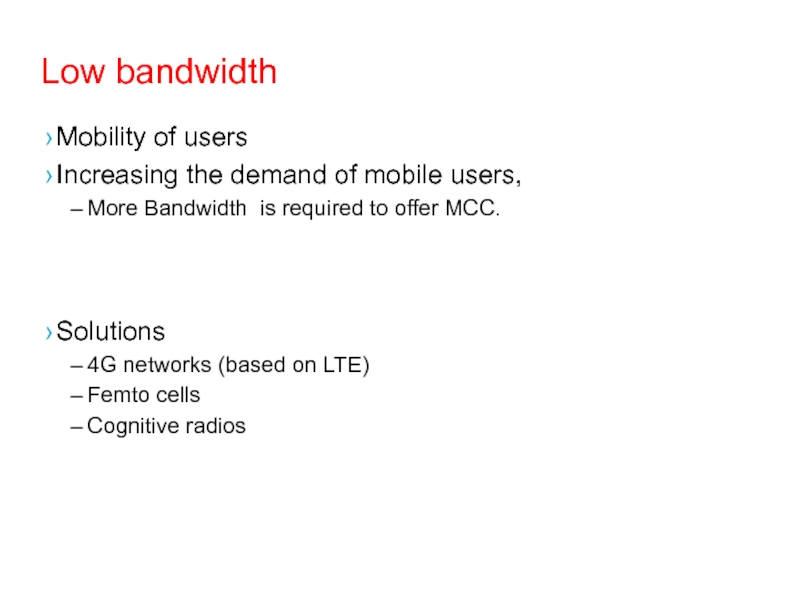
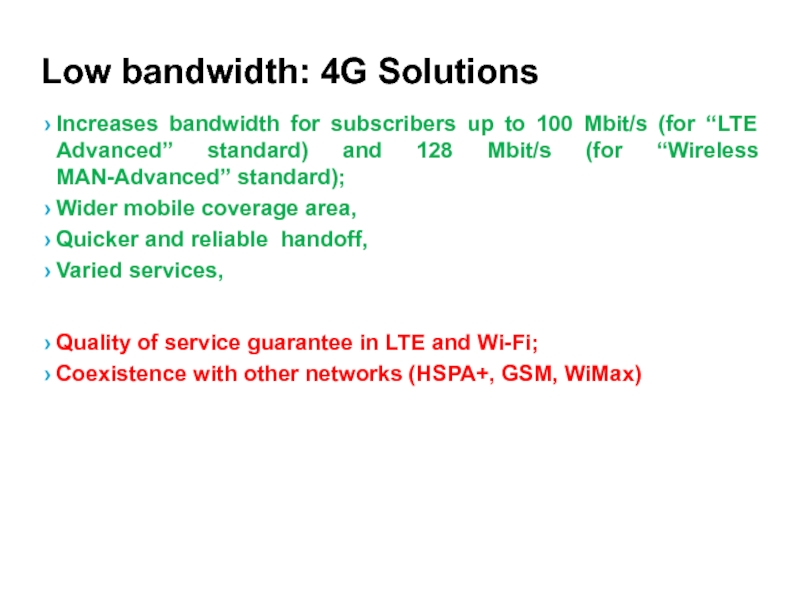
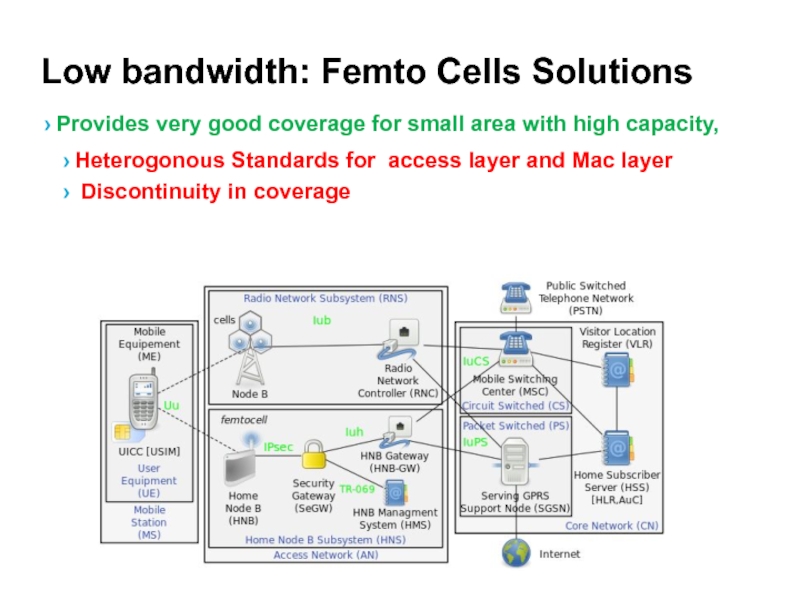
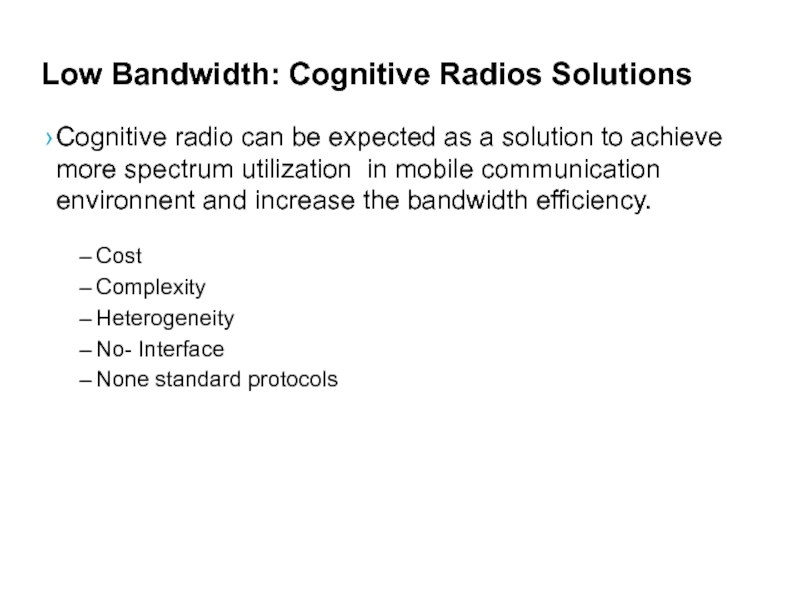

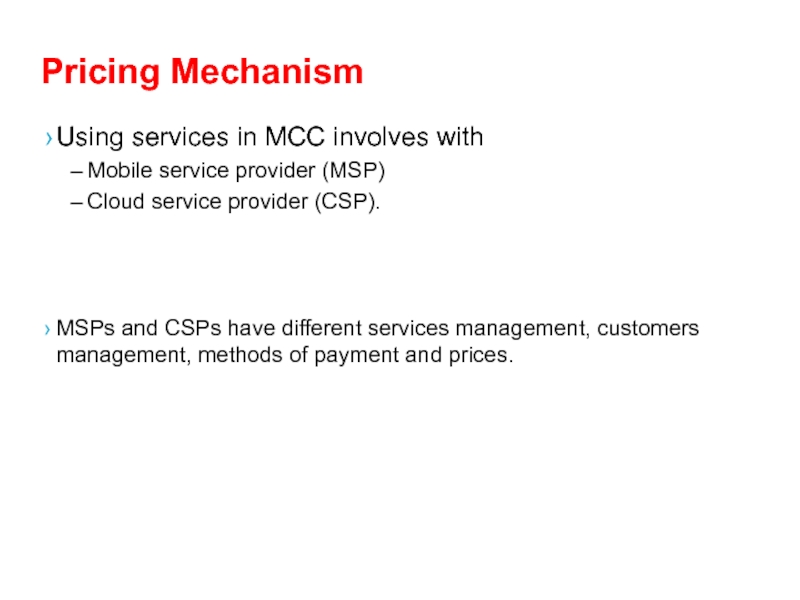
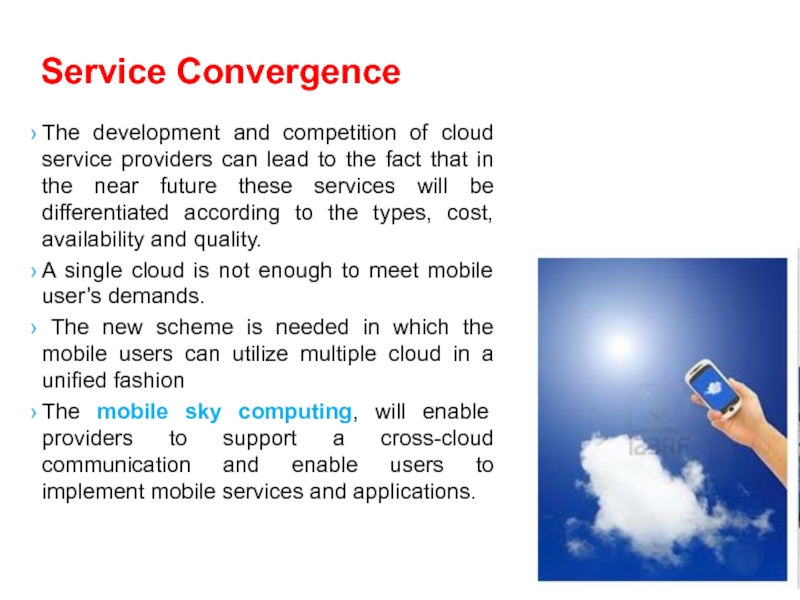
![References [1] Hoang T. Dinh, etal, “A survey of Mobile Cloud Computing: architecture, applications, and](/img/tmb/5/494563/582483d83896f4fbdea514a6d99408cf-800x.jpg)
